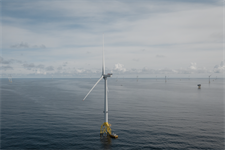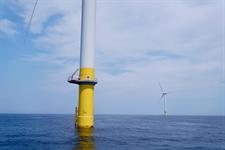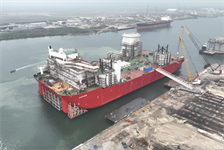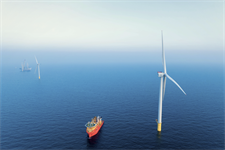Emissions from grid-linked green hydrogen ‘could be worse than brown H2’
Energy Disrupter
The company’s ‘Over the Rainbow’ report examined carbon emissions associated with different ‘colours’ of hydrogen production such as ‘green’ hydrogen, theoretically produced by renewable energy sources, plus gas with carbon capture-based ‘blue’ hydrogen and ‘brown’ hydrogen production from fossil fuel sources.
It found that the carbon emissions from existing hydrogen projects worldwide depend on the entire value chain of the associated production process.
Calculating the true carbon emissions associated with hydrogen production is more complex than it appears at face value, according to the report. WoodMackenzie said that because of the variability of wind and solar energy, many hydrogen projects intend to rely on electricity from the grid, when needed, which can have different sources, ranging from 100% renewables to carbon-heavy fossil fuels.
Consequently some hydrogen production projects labelled ‘green’ could have higher associated carbon emissions than those from carbon-intensive ‘brown’ hydrogen if they require access to grid power rather than sourcing all their power from certifiable renewables sources.
“Green hydrogen is, in principle, made using 100% renewable energy. In practice, however, what is described as ‘green’ can also be produced using power from a grid that relies heavily on fossil fuels,” the report states.
“At the opposite end of the CI [carbon intensity] spectrum, we estimate that emissions from electrolytic hydrogen produced from 100% grid power today could be as high as 50 kgCO2e/kgH2 – worse than brown hydrogen in our study – if the electrolyser is connected to a grid dominated by fossil fuels.”

The report suggests that if grids were forced to set aside renewable electricity for hydrogen production, they might need to use other sources, such as gas or coal, to meet demand.
“Electrolyser demand for clean power could also inadvertently lead to additional fossil-based generation to meet other demand on the grid, increasing overall emissions, especially in markets that lack rules on additionality (adding new renewable capacity alongside hydrogen production) and temporal correlation (matching renewable generation to hydrogen production),” it says.
Life-cycle carbon emmissions
The entire life-cycle carbon emissions associated with hydrogen production must also be considered, the report says.
WoodMac points out that 40% of announced hydrogen production projects are designed for export, and therefore entail additional carbon emissions from processing and transportation.
Carbon intensity related to hydrogen production is frequently dependent on geography, the report shows, with the EU for example setting stringent regulations on which electrolyser projects can be connected to the grid.
A two-tier market for hydrogen production could therefore emerge with regions like Europe and the US producing lower-carbon hydrogen, but other regions such as South Asia lacking the infrastructure to limit the carbon produced from hydrogen projects.
“Labelling by colour has played its part in helping to define the various hydrogen production processes but doesn’t tell the whole story. Hydrogen carbon intensity varies by project and location – not simply by colour – and may also change over time,” the report says.
Click here to subscribe to the green hydrogen bulletin to receive fortnightly dedicated news, analysis and comment straight to your inbox.
To submit a news, comment, case study or analysis idea for the green hydrogen bulletin, contact the editorial team.
















